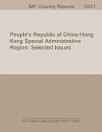Philippines: Selected Issues
International Monetary Fund. Asia and Pacific Dept
apr. 2013 · International Monetary Fund
Rafbók
26
Síður
reportEinkunnir og umsagnir eru ekki staðfestar Nánar
Um þessa rafbók
This article is an empirical analysis on tax collections in the Philippines. The tax system is characterized by a rule of tax incentives provided by 13 investment agencies. Tax collections showed regular growth. The GDP ratio increased from 12.1 percent (2009) to 12.8 percent (2012), but the revenue-to-GDP ratio was low to fill large gaps for education, health, and infrastructure; therefore the authorities encompassed the sin taxes (alcohol and tobacco excises). The most important source of income for the Philippines is the labor export. This large-scale labor emigration fetches a sufficient amount of annual inflows of more than 9 percent of GDP.
Gefa þessari rafbók einkunn.
Segðu okkur hvað þér finnst.
Upplýsingar um lestur
Snjallsímar og spjaldtölvur
Settu upp forritið Google Play Books fyrir Android og iPad/iPhone. Það samstillist sjálfkrafa við reikninginn þinn og gerir þér kleift að lesa með eða án nettengingar hvar sem þú ert.
Fartölvur og tölvur
Hægt er að hlusta á hljóðbækur sem keyptar eru í Google Play í vafranum í tölvunni.
Lesbretti og önnur tæki
Til að lesa af lesbrettum eins og Kobo-lesbrettum þarftu að hlaða niður skrá og flytja hana yfir í tækið þitt. Fylgdu nákvæmum leiðbeiningum hjálparmiðstöðvar til að flytja skrár yfir í studd lesbretti.








